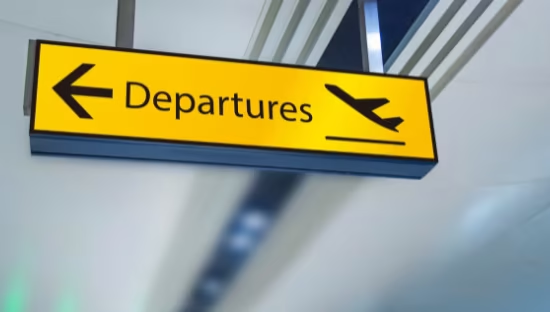
Roaming Isn’t Expensive — Confusion Is
Travelers love to share horror stories about roaming bills. Someone posts a screenshot of a €600 phone bill on Reddit, and the comments pile up: “Carriers are thieves!” or “Never turn on data abroad unless you’re rich!”
But here’s the thing: in 2025, roaming itself isn’t actually that expensive anymore. What’s expensive is misunderstanding how roaming works — the hidden terms, the fine print, and the marketing language that makes it sound like you’re covered when you’re really not.
Let’s unpack that.
The Myth of the “Roaming Rip-Off”
Not long ago, roaming really was outrageous. We’re talking €10 per megabyte in some countries. Sending a single photo could drain your account faster than ordering a round of cocktails at a London airport bar.
That was the past. Today, thanks to regulatory pressure, competition from eSIMs, and global operators finally waking up, raw roaming prices have dropped. In many places, you can get daily bundles — €2 to €5 for unlimited messaging, or €10 for a gigabyte. Not cheap, but hardly the budget-breaking nightmare it used to be.
Yet the perception hasn’t changed. People still fear roaming like it’s a trap waiting to ruin their trip. And that fear comes from confusion, not the actual numbers.
Where the Confusion Starts
Here’s a familiar scenario.
You’re at the airport. Your operator texts:
“Welcome abroad! Enjoy data roaming for just €5/day.”
Sounds good, right? Except what they don’t say upfront is:
- €5/day only covers certain countries. Step into the wrong border zone, and it jumps to €15.
- The “day” resets at midnight local time, not 24 hours after first use. Start browsing at 11:45 p.m. and congrats, you just bought two days in 15 minutes.
- “Unlimited” means 500 MB at full speed, then throttled so badly that Google Maps takes longer to load than a Ryanair boarding queue.
Suddenly, your “cheap” roaming package isn’t what you thought. The cost isn’t the problem. The fine print is.
The Psychology of Uncertainty
Here’s the real kicker: people hate uncertainty more than they hate high prices.
Think about it. You’ll happily pay €8 for a beer in an airport because you know what you’re getting. But you hesitate to turn on roaming because you don’t know what it will cost you until the bill arrives. That uncertainty is what makes roaming feel like a scam.
The operators know this, too. Their terms are written to sound reassuring — “just €X per day!” — while leaving enough wiggle room to charge more. It’s not the raw rate that stings; it’s the feeling of being tricked.
Enter eSIMs — Solving (Some of) the Confusion
eSIMs have become the go-to fix for savvy travelers. You open an app, buy a data plan for your destination, and boom — you’re online without worrying about your operator’s roaming terms.
The prices aren’t always lower, but the clarity is priceless. A plan might say: “3 GB valid for 15 days in France, €12.” That’s it. No hidden resets, no “fair usage,” no mystery text messages at 2 a.m. telling you your bundle is over.
That clarity makes you feel in control. And when you feel in control, you stop panicking about cost.
Why Operators Still Struggle
Mobile operators could fix this tomorrow. They could publish roaming packages in plain English, with real examples, like:
- “If you land in Spain, €5/day gives you 1 GB at full speed, valid until midnight.”
- “If you cross into Morocco, the price jumps to €15. We’ll text you before it switches.”
Simple, transparent, and easy to trust.
But they rarely do that. Why?
Because confusion is profitable. If you misunderstand the rules and rack up extra charges, it’s more revenue for them. Regulators have tried to step in—especially in the EU—but beyond Europe, the Wild West still rules.
The Hidden Traps to Watch
Here are some of the most common roaming traps that make costs feel higher than they really are:
- Midnight Resets – Daily packages don’t run for 24 hours; they expire at midnight local time. Use data late at night, and you’re paying for two days.
- Auto-Renew Bundles – Some plans renew automatically when data runs out, even if you don’t want them to.
- Border Overlaps – Your phone latches onto the wrong network when you’re near a border. Suddenly, your “EU free roaming” turns into “Welcome to Switzerland — €15/MB.”
- Fair Usage Policies – “Unlimited” often isn’t unlimited. After a cap, speeds drop so much you can’t even check WhatsApp.
- Voice vs. Data Pricing – Some bundles cover data but not calls or texts, which can add up faster than you realize.
How Travelers Can Beat the Confusion
So, what’s the fix? It’s not to boycott roaming altogether. It’s to be smarter about it.
- Read the welcome text carefully — Those automatic texts usually hide the real rules.
- Turn off auto-updates — Don’t let your phone burn through data on background updates.
- Use Wi-Fi where possible — Obvious, but still the cheapest option.
- Install an eSIM before you travel — Even if you don’t use it, it’s your safety net.
- Check coverage maps — Especially near borders. Airplane mode + manual network selection can save you from “accidental” charges.
Why This Matters for the Future of Travel
We’re living in a time when connectivity is as essential as water and electricity. Travelers don’t just want to check email; they rely on Google Maps, translation apps, ride-hailing, boarding passes, and even digital wallets.
If roaming feels unreliable or shady, people will find workarounds — eSIMs, local SIMs, or just sticking to Wi-Fi. That erodes trust in traditional mobile operators and pushes the market further toward disruptors.
Which, frankly, might be a good thing. Competition forces clarity.
Final Thought: Roaming Isn’t the Villain
The next time someone tells you roaming is too expensive, challenge that. Ask them: “What exactly did you pay for, and what did you expect?”
Chances are, the bill shock came from unclear terms, not the actual cost per megabyte. Roaming today is often affordable, sometimes even reasonable. What’s missing is honesty.
And until the telecom industry gets better at communicating, travelers will keep fearing roaming like it’s a monster under the bed — when really, it’s just a messy contract written in small print.
So don’t fear roaming. Fear confusion. And fight it with knowledge, clarity, and a little digital independence.










